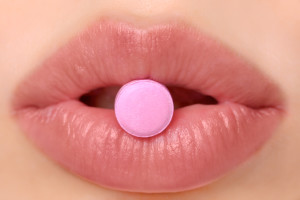The following is a blog post by our contributor and story reviewer Alan Cassels. He’s an expert on the marketing tricks employed by the pharmaceutical industry to increase sales — and he knows how to fold laundry, too.
 The company is up to bat, with a drug that has already had two strikes, and they’re ready for the next pitch. Everyone is holding their breath: will they knock it out of the park this time or head back to the bench, crushed?
The company is up to bat, with a drug that has already had two strikes, and they’re ready for the next pitch. Everyone is holding their breath: will they knock it out of the park this time or head back to the bench, crushed?
We’re talking about the June 4th hearings around flibanserin, a drug that has been mired in controversy ever since it was first touted as necessary chemical assistance for HSDD (Hypoactive Sexual Desire Disorder) in women, formerly know as a drooping libido. While it is hard to characterize its real effectiveness (the drug was tested against placebo instead of a glass of red wine or a partner who knows how to fold laundry), flibanserin has failed the approval test twice because it was shown only to be modestly effective and caused sleepiness, dizziness and nausea. The drug was before the FDA in June 2010 and was struck down in a 10 to 1 vote saying that it didn’t work any better than placebo. Last time it was being reviewed, in 2013, the FDA sent it back to the drawing board wanting more safety data.
This week’s coverage from the New York Times and Bloomberg outlined some of the safety issues and politics of creating what has been called the world’s first Pink Viagra. The drug is being pitched as addressing a basic gender inequality, and advocates say that a woman’s need to have a pill to enhance her sexual interest is only fair since there are already many drugs to enhance male sexuality. The advocates have argued that the FDA needs to help Even the Score (the name of the pro-flibanserin campaign).
Australian journalist Ray Moynihan wrote about the drug industry’s involvement in female sexual dysfunction (FSD) in the BMJ in 2003, a piece which later became a chapter in our book — Selling Sickness — on the creation and marketing of diseases. Calling FSD the “freshest, clearest example we have,” we reported on the phenomenon that in order to sell any drug, you first have to sell the disease. Female Sexual Dysfunction seemed to be largely, but not completely, a creation of the pharmaceutical industry. That’s the position of Leonore Tiefer, a psychologist at the New York University School of Medicine who has been on this beat for sixteen years, maintaining that most problems related to sex are psychological and relational, not medical. She says that much damage can be wrought by medicalizing female sexual health.
I talked to her again this week in her office in New York City where she is rushing about getting ready for the upcoming flibanserin hearings on June 4th. “What to expect?” I wondered and she said: “The smart money seems to be on a heavy risk management strategy.” What she means is that all the controversy over the disease (do women really need an FDA-approved aphrodisiac?) or the drug’s minimal effectiveness (the latest data shows that it produces an average of 4.4 satisfying sexual experiences per month versus 3.7 on placebo) seems to have been pushed aside: now they’re only talking about the drug’s safety.
“They seem very thoughtful about it,” she said, adding that they have developed “literature for pharmacists and doctors, as well as patient information.” She asked me: “Do you say ‘intentional red herring’ or just ‘red herring,’” underlining the fact that if you’ve got a questionable drug for a questionable condition, the key is to focus peoples’ attention elsewhere. In this case, the drug’s safety is the diversion.
Tiefer, who heads up the NewView Campaign, also wrote to me in an email: “the Big issue of the day will be DDI (drug-drug interactions) and whether warnings will be sufficient.” A big concern centers around the uncertainty of mixing alcohol and flibanserin. One of the memorandums filed in advance of the FDA hearing said that “no known risk management strategy will eliminate the risks of hypotension/syncope associated with flibanserin use alone or the exacerbated risks of hypotension/syncope when combined with alcohol.”
Let’s see. I might be naïve to this, but trying to improve sexual desire and eliminating alcohol? Hmm. I guess it’s possible. But is it likely? Even though the manufacturer will trip over itself trying to produce written information packages and so on to try to demonstrate the drug can be taken safely, Leonore Tiefer wonders about the marketing strategy.
She riffs: “Would ‘Pink Viagra for teetotallers, only!’ work?”
We’ll find out on Thursday.
The post Pink Viagra may be coming soon (but for teetotalers, only!) appeared first on HealthNewsReview.org.
